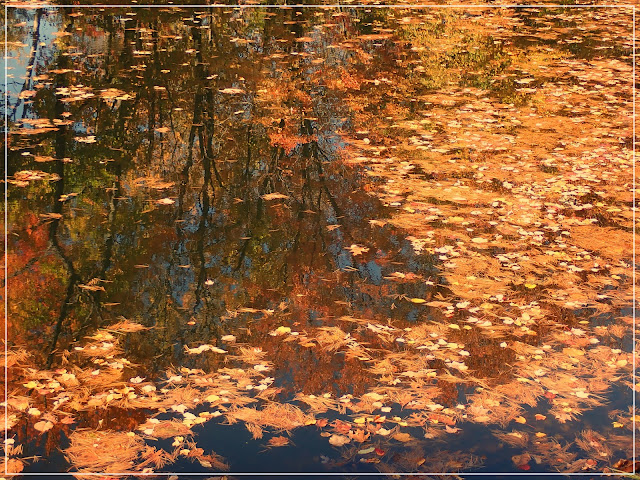We will be traveling again, not by car, but by plane (again).
As of tomorrow, Tuesday, our destination is across the pond to England (London), Ireland (various locations) and Scotland (Edinburgh).
Wonder why this phrase is popular, we're crossing the North Atlantic Ocean not a pond.
Now, you may be thinking (rightly so) that we're doing a lot of travel abroad in a short timeframe. We returned from Amalfi, Italy, barely 5 weeks ago.
That's right — it's a lot of travel, but then we have been taking road trips in New England and on the East coast for many years and did a cross-country trip.
Before Italy, the last time we had traveled abroad by air was over 50 years ago. The last time we flew domestically was nearly 17 years ago for the birth of grandson Bobby in CA.
We decided it was time to make up for lost time and to enjoy more experiences as much as possible — if we could afford it and were well enough.
After the unexpected passing of two friends in recent months, the adage about time running short sadly is becoming closer and more true.
Traveling has been a learning experience and we've come a long way in the past few weeks.
Now, we can download and save boarding passes and successfully navigated three large airports (Boston, Dublin, Naples). We'll be going through at two of those again on this trip, plus adding a first-time ones in London, Amsterdam and Scotland.
The most fun has been learning to use the free app, WhatsApp to communicate by text and phone messages.
WhatsApp is a freeware, cross-platform, centralized instant messaging and voice-over-IP service owned by U.S. tech conglomerate Meta Platforms (Facebook). It lets users send text, voice and video messages, make voice and video calls, and share images, documents, user locations, and other content.
Just to be clear, we remain newbies at using this app. This is in no way an endorsement for everyone. It worked very well for keeping in contact with fellow travelers as part of a smaller group. On this current trip, we'll only be exchanging messages with others also using the app.
That said, using WhatsApp to call friends and family from Italy was great — no need for an international calling plan — just a Wi-Fi connection and cell number on both ends.
The previous trip to Amalfi trip was a small group tour coordinated by the owner of a wine store here in Nashua, NH and its September date made it a month-late anniversary gift to ourselves. Even if that event wasn't imminent, we were going.
This current trip, Shades of Ireland, is being coordinated by a New England company, Collette Tours (RI based) and promoted last spring at the senior center we belong to in Hudson NH. Other friends said they planned to go. After giving it due thought — at least 24 hours, we were going too. It's a(nother) gift to us for no special reason, the best kind.
Ireland is the main trip focus with eight days touring by motor coach stopping at destinations in various cities. Two two offered options were: a 4-day pre-extension to London and/or a 4-day post-extension to Edinburgh. Originally, we signed up only for Ireland, later adding the options to do it all. We would already be close to both countries even if it's not possible to see everything, this time.
Briefly, our tour starts in London with a 3-night stay. Then, a flight to Ireland and a motor coach tour with overnight stops in Dublin (2), Waterford City (1), Killarney (2), Limerick (2), Dublin (1). After Dublin, while others head home, we fly to Edinburgh for 3 nights.
What's as exciting as the trip is a meet-up with a couple we met 10 plus years ago and haven't seen since. Here's why: we met Kath and Andrew at breakfast while touring the Blue Ridge Mountains in VA on another anniversary trip — coincidentally it's also their anniversary 🥂 date. We've kept in contact through card exchanges, emails and photos, never met since.
They live in Derby but are visiting family in Watford and will take a train to London. We chatted this weekend via WhatsApp to firm up a meet date, this coming Thursday 😀.
WhatsApp is also how we communicated with fellow blogger, Christina (A Colourful Life). We're planning a met-up during the Edinburgh stay.
Other fellow bloggers who live in countries we will be visiting, please feel free to email.
I'm taking my notebook computer on the trip to try and post from some of the locations.
While I'll try to keep up with some of your recent posts, comments may take awhile.
Thanks, in advance, for the well travel wishes as all are much appreciated.
 This pour is for all of you and shows Buckingham Palace, where we gathered with so many others last Friday in London to witness the changing of the guard. Oddly enough, the music played was not traditional marching music or even British, instead we heard American standards from the Great American Songbook, go figure. And, there were no bagpipes that we heard.
This pour is for all of you and shows Buckingham Palace, where we gathered with so many others last Friday in London to witness the changing of the guard. Oddly enough, the music played was not traditional marching music or even British, instead we heard American standards from the Great American Songbook, go figure. And, there were no bagpipes that we heard.






























































